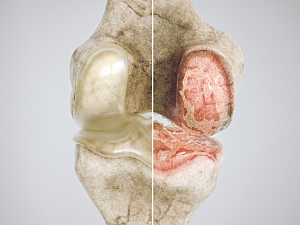Current treatment guidelines recommend against prescribing opioids for patients with knee osteoarthritis, as accumulating evidence calls into question their efficacy for long-term pain management.
Encouragingly, Medicare data show chronic opioid use decreased from 12% of older patients with knee osteoarthritis in 2013 to 4% in 2016. That reduction resulted in an estimated $20 billion decrease in lifetime knee opioid-related costs.
However, Elena Losina, MD, PhD, research associate in the Department of Orthopaedic Surgery at Brigham and Women’s Hospital, and colleagues estimate the total lifetime cost of opioid use among patients with symptomatic knee osteoarthritis is $14 billion.
What’s more, they say in Arthritis Care & Research, 47% of that cost is unrelated to pain management or other clinical care.
Methods
The researchers performed computer modeling with the Osteoarthritis Policy Model, a validated microsimulation of the natural history and treatment of symptomatic knee osteoarthritis. The model transitions hypothetical individuals among health states defined by knee osteoarthritis severity and comorbidities, and tracks the associated annual costs.
Inputs to the model (e.g., costs and the probabilities of treatment response, adverse events, treatment discontinuation, opioid use disorder and overdose) were based on U.S. medical literature and government data. The team started with a hypothetical cohort that had a mean age of 54, a mean body mass index of 30.5 kg/m2 and a mean WOMAC pain score of 29.
Only individuals with a WOMAC pain score >40 were eligible for an opioid. They started with weak opioids (e.g., tramadol) and proceeded to a strong opioid if necessary. Based on Medicare data, the researchers assumed 5% of patients would use strong opioids chronically (more than five prescriptions annually of fentanyl, hydrocodone/acetaminophen, hydromorphone, morphine, oxycodone or oxycodone/acetaminophen).
Annual Cost
The estimated annual cost of opioid use in U.S. patients with symptomatic knee osteoarthritis was $0.498 billion:
- $0.266 billion (53%)—direct medical costs of treatment and treatment-related adverse events
- $0.149 billion (30%)—the cost of opioids diverted from patients for illicit use by others
- $0.073 billion (15%)—lost work productivity
- $0.010 billion (2%)—criminal justice costs resulting from opioid use disorder
Costs are reported in 2018 dollars.
Lifetime Cost
The estimated total lifetime cost of opioid use in the same population was $14 billion:
- $7.45 billion (53%)—direct medical costs
- $4.19 billion (30%)—diversion
- $2.04 billion (15%)—lost work productivity
- $288 million (2%)—criminal justice costs
Commentary
These results support the guidelines against prescribing opioids for pain management in knee osteoarthritis, as they provide new evidence of a substantial economic burden. Reducing chronic opioid use would lead to a meaningful reduction in societal costs that could be applied to other public health concerns.
